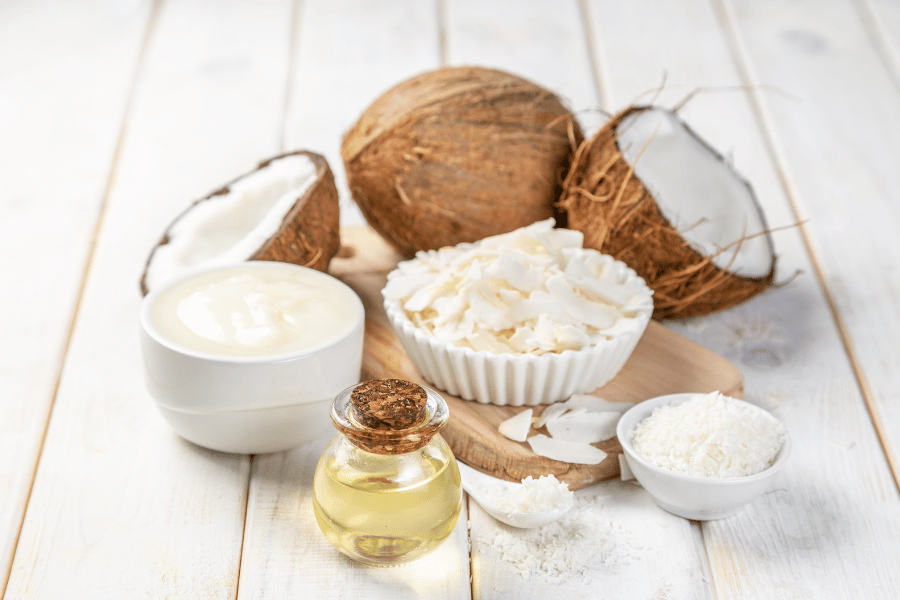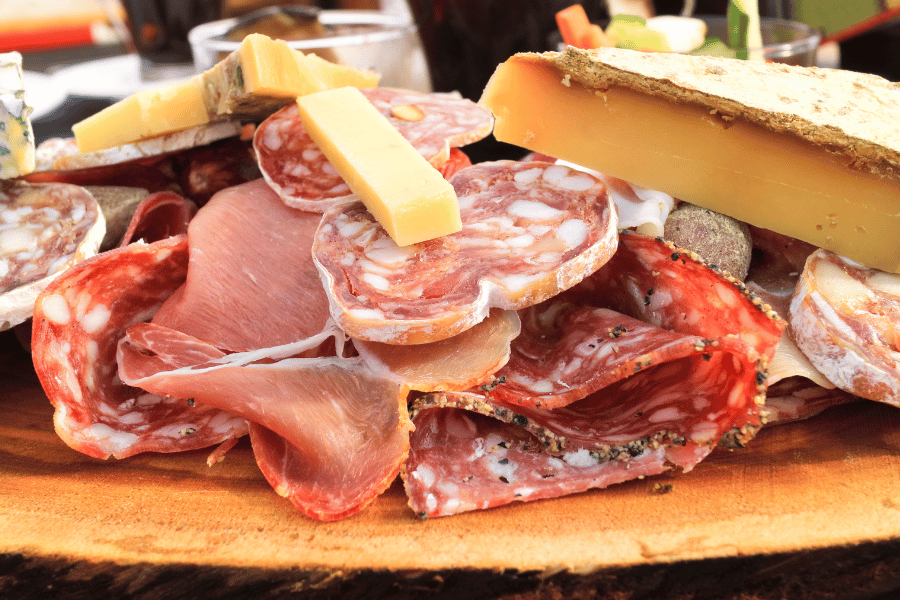The ketogenic, or keto diet, has surged in popularity as an effective weight loss strategy, especially evident in the countless keto diet before and after 30 days success stories. As we step into 2024, it continues to be a preferred choice for those looking to transform their bodies and lifestyle. This comprehensive guide is designed to navigate you through a 30-day keto journey, providing essential tips and insights for maximizing your results.
The essence of the keto diet lies in its low carbohydrate, high-fat approach, prompting the body to enter a state of ketosis where fat is burned for energy instead of carbs. Tracking progress over a 30-day period is crucial in observing the transformative impact of this diet on your body. Setting a 30-day goal not only provides a tangible timeframe for assessing changes but also helps in maintaining focus and motivation throughout the journey.
Embarking on a keto diet requires understanding its fundamentals, preparing your kitchen, and embracing the lifestyle changes it entails. This guide will walk you through each step, from the initial transition into ketosis, dealing with the early challenges like the keto flu, to the exhilarating moment of witnessing your before and after transformation. Let’s dive into the world of keto and explore how you can effectively transform your body in just 30 days.

Getting Started with the Keto Diet
Embarking on the ketogenic diet journey begins with a fundamental understanding of what it entails. The ketogenic, or keto diet, is a low-carbohydrate, high-fat dietary regimen that aims to put your body into a state of ketosis. In ketosis, the body efficiently burns fat for energy instead of relying on carbohydrates.
Foods to Include and Avoid
A successful keto journey hinges on knowing which foods to embrace and which to avoid. Key foods to include in your keto diet are:
- Fatty meats like bacon, sausage, and fatty cuts of beef and pork.
- High-fat dairy such as cheese, butter, and heavy cream.
- Nuts and seeds, which are high in healthy fats and low in carbs.
- Low-carb vegetables like spinach, kale, and broccoli.
- Healthy oils like coconut oil, olive oil, and avocado oil.
Conversely, foods to avoid include:
- High-carb fruits like bananas, apples, and oranges.
- Grains and starches, including bread, pasta, rice, and cereals.
- Sugary foods and sweets, such as cookies, cakes, and ice cream.
- Root vegetables high in carbs, like potatoes, carrots, and parsnips.
Calculating Macros and Calorie Intake
An essential step in starting the keto diet is calculating your macronutrients (macros) and caloric intake. Macros on a keto diet typically consist of high fat (70-80% of your daily calories), moderate protein (15-20%), and very low carbs (5-10%). Calculating your specific needs involves considering factors like age, gender, activity level, and weight loss goals.
Several online calculators and apps can help you determine your daily caloric needs and macro breakdown. Keeping track of these numbers is crucial for staying within the ketosis-friendly range and ensuring your body is adequately fueled.
By understanding the principles of the keto diet, which foods to include and avoid, and how to calculate your macros and caloric intake, you can set a solid foundation for your 30-day keto journey. In the next sections, we’ll delve into preparing your kitchen, transitioning into ketosis, and navigating through each week of your keto adventure.

Preparing for Your 30-Day Keto Journey
Embarking on a 30-day ketogenic diet journey requires careful preparation to ensure success. Here’s how you can set the stage for a successful transition into the keto lifestyle:
Clearing Out Your Kitchen
The first step is to declutter your kitchen of non-keto-friendly foods. Remove high-carb items like bread, pasta, sugary snacks, and cereals. This not only eliminates temptation but also makes room for healthier, keto-approved options. Keeping your environment aligned with your diet goals is crucial for staying on track.
Creating a Meal Plan
Planning is key in the keto diet. Draft a meal plan that incorporates a variety of keto-friendly foods to keep your diet interesting and satisfying. A well-thought-out meal plan ensures you’re getting the right balance of macros and reduces the likelihood of impromptu, non-keto eating decisions. Include meals that are both enjoyable and easy to prepare to maintain consistency.
Stocking Up on Keto-Friendly Foods
Once your kitchen is cleared, stock it with keto essentials:
- Fats and Oils: Olive oil, coconut oil, avocado oil, and grass-fed butter.
- Proteins: Fatty cuts of meat, poultry, fish, and eggs.
- Vegetables: Leafy greens, cauliflower, zucchini, and other low-carb veggies.
- Dairy: High-fat cheeses, heavy cream, and full-fat yogurt.
- Snacks: Nuts, seeds, and keto-friendly bars or shakes for on-the-go snacking.
Consider buying in bulk for staples and exploring local health food stores for specialty items. Remember, variety is key to keeping your diet exciting and sustainable.
Additional Tips
- Invest in a good quality food scale and measuring cups to accurately track your food intake.
- Familiarize yourself with keto-friendly recipes and cooking methods.
- Consider meal prepping to save time and ensure you always have keto-friendly meals ready.
By clearing out your kitchen, creating a strategic meal plan, and stocking up on essential keto-friendly foods, you are laying a strong foundation for your 30-day keto journey. These steps will help you smoothly transition into the keto lifestyle and set you up for success.
Week 1: The Initial Phase
The first week of your keto diet is a critical phase, often marked by significant changes as your body adjusts to a new way of fueling itself. Here’s how you can navigate this initial period:
Transitioning into Ketosis
The primary goal in the first week is to shift your body into a state of ketosis. This requires strict adherence to your low-carb, high-fat diet. Your body, which is used to burning carbohydrates for energy, will start to switch to burning fat. This transition can take a few days to a week.
Dealing with the Keto Flu
As your body adapts to ketosis, you may experience what’s known as the “keto flu.” Symptoms can include fatigue, headaches, dizziness, and irritability. These symptoms are temporary and usually subside within a week. To alleviate these symptoms:
- Stay hydrated and increase your intake of electrolytes (sodium, potassium, and magnesium).
- Eat foods rich in these minerals, like avocados (for potassium) and nuts (for magnesium).
- Get adequate rest and avoid strenuous activities as your body adjusts.
Sample Meal Ideas for Week 1
Your meals in the first week should be simple yet satisfying, focusing on your macronutrient goals. Here are some sample meal ideas:
- Breakfast: Scrambled eggs with spinach and cheese, cooked in butter.
- Lunch: Chicken salad with olive oil dressing and a side of avocado.
- Dinner: Grilled salmon with asparagus and a dollop of herbed butter.
- Snacks: Cheese slices, nuts, or a hard-boiled egg.
Tips for Success
- Monitor your carb intake vigilantly to ensure you’re staying within your limits.
- Prepare your meals in advance to avoid the temptation of off-diet foods.
- Listen to your body’s hunger and fullness cues – keto can naturally reduce appetite.
This first week is about establishing a solid foundation and getting your body into ketosis. It’s a period of adaptation, and while it might be challenging, remember that these changes are paving the way for significant results. Stay committed, and you’ll soon transition into a more comfortable phase of your keto journey.
Week 4: Wrapping Up and Reflecting
As you approach the fourth and final week of your 30-day keto journey, it’s time to reflect on the progress you’ve made and prepare for the future. Here’s how to approach this concluding phase:
Achievements and Challenges Faced
Reflect on the achievements you’ve made over the past month. You may have noticed significant changes in your weight, body shape, energy levels, and overall well-being. Acknowledge any challenges you faced and how you overcame them. This reflection will not only give you a sense of accomplishment but also help you understand more about your body and its response to the keto diet.
Celebrating Your Successes
Celebrate your successes, no matter how big or small. Whether it’s sticking to the diet, overcoming the keto flu, or reaching a weight loss goal, each achievement is a step towards a healthier you. Celebrating these milestones can motivate you to maintain your new lifestyle.
Preparing for the Next Phase
As you wrap up your 30-day challenge, start planning for the future. Consider the following:
- Decide if you want to continue with the keto diet or transition to a less restrictive, but still healthy, eating plan.
- Think about how you can incorporate the lessons learned during this journey into your long-term health goals.
- If you plan to continue with keto, consider how you will manage social situations, dining out, and other challenges.
Tips for Success
- Set new goals for the next phase of your health journey, whether they’re related to weight loss, fitness, or overall health.
- If you’re transitioning out of strict keto, do so gradually to avoid overwhelming your system.
- Continue to monitor your body’s response and adjust your diet and lifestyle as needed.
This final week is a time for both celebration and contemplation. You’ve embarked on a challenging journey and have likely seen some incredible changes. Use this experience to guide your future health decisions and continue on your path to wellness.

Maintaining Your Progress
After completing the 30-day keto challenge, the next important step is maintaining the progress you’ve achieved. Transitioning out of the strict 30-day regime requires thoughtful planning to ensure long-term success. Here’s how you can sustain your results:
Transitioning Out of the 30-Day Challenge
If you decide to transition off the strict keto diet, do it gradually to avoid shocking your system. You might start by slowly increasing your carb intake while still focusing on healthy, whole foods. Pay close attention to how your body reacts to these changes.
Incorporating the Keto Diet into Your Lifestyle
Consider how you can incorporate aspects of the keto diet into your everyday life. This might mean continuing with low-carb meals during the week and allowing for some flexibility on weekends, or it could involve sticking to a keto-friendly diet with occasional treats.
Tips for Long-Term Success
- Set New Goals: Establish new health and wellness goals to stay motivated. These could be related to fitness, dietary habits, or general well-being.
- Stay Active: Regular physical activity is crucial for maintaining weight loss and overall health. Find an exercise routine you enjoy and can stick to.
- Monitor Your Progress: Continue to track your dietary intake and body changes. This can help you make necessary adjustments to your diet and lifestyle.
- Be Mindful of Carbs: Even if you increase your carb intake, be mindful of the types of carbs you consume. Opt for whole grains, fruits, and vegetables over processed foods and sugars.
- Seek Support: Whether it’s from friends, family, or online communities, having a support system can help you stay on track and motivated.
By carefully planning your post-challenge strategy, you can maintain the benefits you’ve gained from your keto journey. Remember, the end of the 30-day challenge is not the end of your health journey. It’s a transition to a new, healthier lifestyle that incorporates the lessons and habits you’ve developed. Stay committed, and you’ll continue to see positive changes in your health and well-being.
Frequently Asked Questions (FAQ)
After delving into the details of a 30-day keto journey, let’s address some commonly asked questions related to the keto diet and its effects:
Q: How does the keto diet work? A: The keto diet works by drastically reducing carbohydrate intake and replacing it with fat, leading the body into a state called ketosis. In ketosis, the body becomes incredibly efficient at burning fat for energy instead of carbs, which can lead to weight loss and improved energy levels.
Q: Can I have cheat days during the 30 days? A: Cheat days that involve high carbohydrate intake can take your body out of ketosis, which can hinder your progress. It’s recommended to stick to the diet strictly for the 30-day period to see the best results.
Q: What are common challenges people face on keto? A: Common challenges include the keto flu (symptoms like headache, fatigue, and dizziness as your body adjusts), managing social situations with limited food options, and finding variety in meals to stay motivated.
Q: How do I track my progress effectively? A: Track your progress by monitoring your weight, taking body measurements, and noting changes in how your clothes fit. Also, pay attention to changes in energy levels and overall well-being.
Q: Are there any potential side effects to watch out for? A: Some people experience side effects like constipation, low blood sugar, nutrient deficiencies, and kidney stones. It’s important to consume a balanced diet and talk to a healthcare provider before starting the diet, especially if you have pre-existing health conditions.